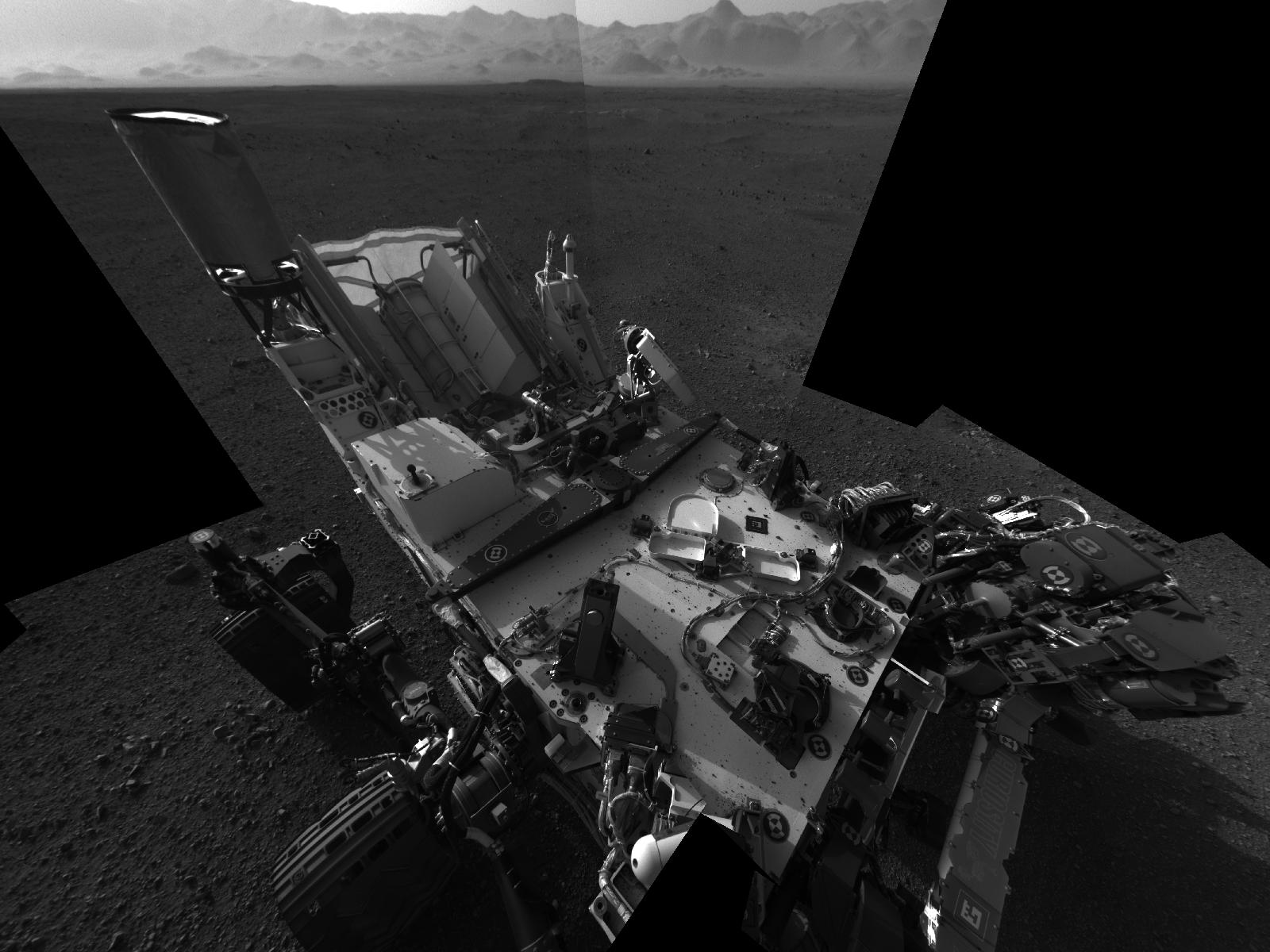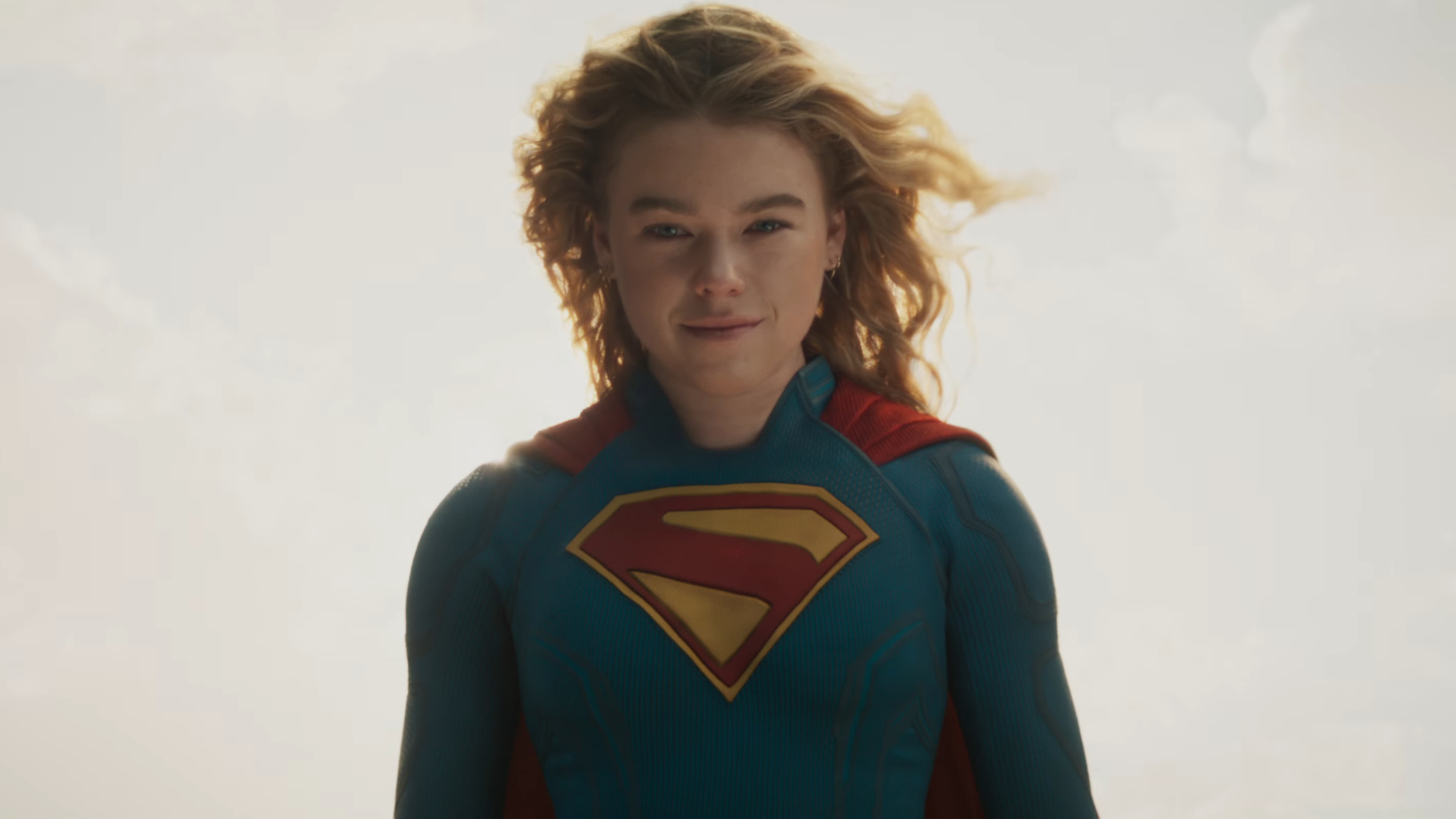Say Cheese! Mars Rover Curiosity Snaps 1st Hi-Res Self-Portrait

A newly released photo mosaic from NASA's Mars rover Curiosity reveals the huge robot and its exotic Red Planet landing site in crisp detail.
Curiosity snapped the high-resolution self-portrait with its navigation cameras on the night of Aug. 7, just two days after it touched down inside Mars' huge Gale Crater. NASA released the image — which is composed of 20 full-frame navcam shots — during a press conference Friday (Aug. 17).
"What's really exciting about this is that we see the rover — a self-portrait, with the rim of Gale Crater in the background," said Curiosity chief scientist John Grotzinger, a geologist at Caltech in Pasadena.
The back of the rover is at the image's left. Two of Curiosity's three right-side wheels are visible, as are a smattering of small rocks kicked up onto the rover's deck by its rocket-powered sky crane, which lowered Curiosity to the surface on cables. [Photos: Latest Curiosity Rover Views from Mars]
Curiosity, the centerpiece of NASA's $2.5 billion Mars Science Laboratory mission (MSL), aims to determine if the Gale Crater area is, or ever was, capable of supporting microbial life. The rover will spend the next two years or more studying rocks and soil in the 96-mile-wide (155 kilometers) crater with its 10 different science instruments.
Curiosity's main science target is Mount Sharp, the 3.4-mile-high (5.5 kilometers) mountain rising from Gale's center. Mars-orbiting spacecraft have spotted evidence of clays and sulfates near Mount Sharp's base, suggesting it was exposed to liquid water long ago.
The rover likely won't begin driving toward Mount Sharp for several months. Mission scientists are still checking out the rover and its instruments, making sure everything is in good working order on the Martian surface. They've found no major problems yet, scientists have said.
Breaking space news, the latest updates on rocket launches, skywatching events and more!
Researchers announced today that Curiosity's first big drive will be to a site called Glenelg, which sits about 1,300 feet (400 meters) east of Curiosity's landing site. Glenelg is not on the way to Mount Sharp, but it hosts three different types of terrain for the rover to check out, all in one spot.
Curiosity has yet to turn its wheels on the Red Planet's surface, but that should change soon. Mission team members have said they're aiming to take Curiosity on its first short drive next week sometime, possibly as early as Monday or Tuesday (Aug. 20 or 21).
If everything goes well, Curiosity could begin the trek to Glenelg shortly thereafter. The rover may be ready to head for Mount Sharp sometime toward the end of the year, Grotzinger said.
Follow SPACE.com senior writer Mike Wall on Twitter @michaeldwall or SPACE.com @Spacedotcom. We're also on Facebook and Google+.

Michael Wall is a Senior Space Writer with Space.com and joined the team in 2010. He primarily covers exoplanets, spaceflight and military space, but has been known to dabble in the space art beat. His book about the search for alien life, "Out There," was published on Nov. 13, 2018. Before becoming a science writer, Michael worked as a herpetologist and wildlife biologist. He has a Ph.D. in evolutionary biology from the University of Sydney, Australia, a bachelor's degree from the University of Arizona, and a graduate certificate in science writing from the University of California, Santa Cruz. To find out what his latest project is, you can follow Michael on Twitter.
